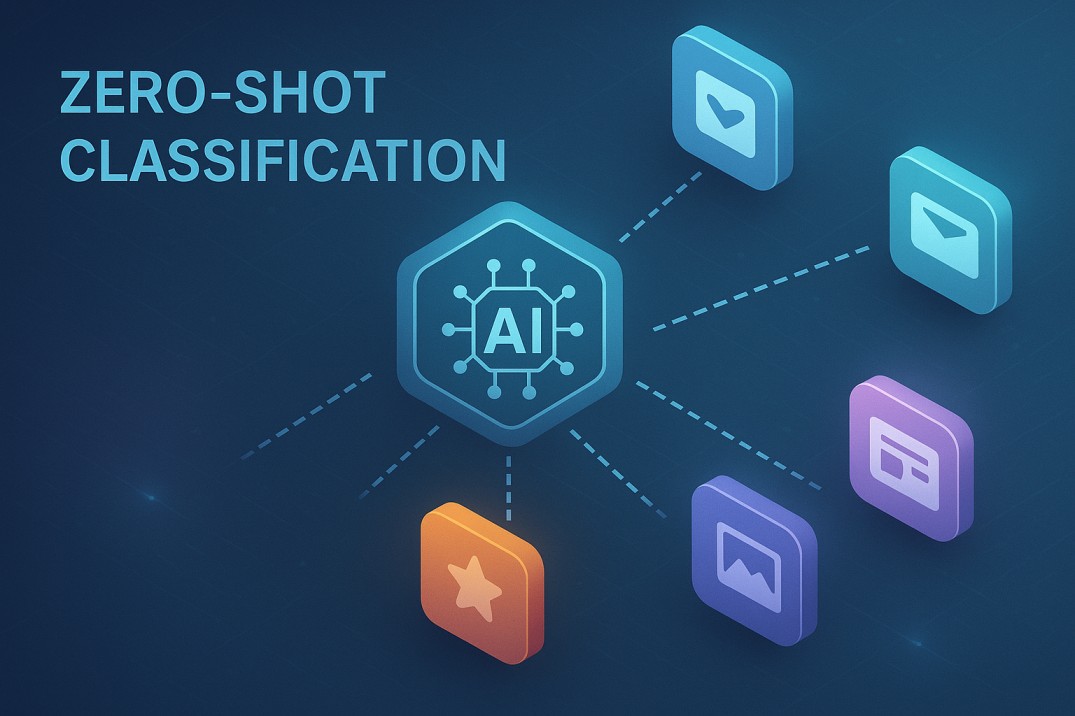In the rapidly evolving field of machine learning, zero-shot classification has emerged as a powerful technique to tackle tasks where labeled training data is scarce or nonexistent. This approach enables models to generalize to unseen categories, breaking traditional barriers in supervised learning. In this post, we’ll dive into the mechanics of zero-shot classification, its applications, and how you can leverage it in your projects—backed by research, industry use cases, and trusted tools.
What is Zero-Shot Classification?
Zero-shot classification (ZSC) allows a machine learning model to classify data into categories it has never explicitly seen during training. Unlike supervised learning, where models require extensive labeled examples for each class, zero-shot methods rely on semantic understanding and transfer learning to make predictions. This is particularly useful in dynamic environments where new categories emerge frequently, such as in content moderation or multilingual applications.
Key Concepts
- Input Instance: The data to classify (e.g., text, image, or audio).
- Candidate Labels: A set of potential classes, which may not exist in the model’s training data.
- Pre-trained Model: A model trained on a broad dataset (e.g., BERT, GPT, or CLIP) to capture rich semantic relationships.
- Scoring Mechanism: A method to compare the input with candidate labels (e.g., cosine similarity in embedding space).
How Does Zero-Shot Classification Work?
The Process
- Embed Input and Labels: The model encodes both the input (e.g., a text sentence) and candidate labels into a shared semantic space.
- Compute Similarity: Scores the similarity between the input embedding and each label embedding.
- Predict the Label: Selects the label with the highest similarity score as the prediction.
Techniques Enabling Zero-Shot Learning
- Natural Language Inference (NLI):
Models like BART or T5, fine-tuned on NLI tasks, assess whether an input “entails” a candidate label. This approach builds on the Multi-Genre Natural Language Inference (MultiNLI) corpus [1]. - Semantic Embeddings:
Models such as Sentence-BERT [2] generate embeddings where similar concepts cluster together, enabling similarity-based classification. - Multimodal Models:
OpenAI’s CLIP (Contrastive Language–Image Pretraining) [3] aligns text and image embeddings, enabling zero-shot image classification via text prompts.
Applications of Zero-Shot Classification
- Text Classification: Automatically tag customer support tickets with new categories (e.g., “billing”, “technical issue”). Companies like Zendesk use zero-shot models to adapt to evolving customer needs [4].
- Multilingual Tasks: Classify text in low-resource languages using labels in high-resource languages. The XNLI dataset [5] benchmarks cross-lingual NLI performance.
- Content Moderation: Detect emerging harmful content types without retraining. Facebook (Meta) employs zero-shot techniques to identify novel hate speech patterns [6].
- Image Classification: CLIP powers tools like DALL·E and MidJourney to classify or generate images from text prompts. Google’s Vision API also leverages similar techniques [7].
Benefits and Challenges
✅ Benefits
- Flexibility: Adapt to new classes without retraining. Research shows zero-shot models like GPT-3 can generalize to tasks like translation and summarization without fine-tuning [8].
- Reduced Labeling Effort: Eliminates the need for task-specific labeled data.
- Cross-Domain Generalization: Apply models to diverse domains (e.g., medical text to legal text) [9].
❌ Challenges
- Performance Variability: Accuracy depends on label phrasing and domain alignment. A 2021 study found label wording can swing accuracy by up to 30% [10].
- Label Ambiguity: Poorly phrased labels lead to incorrect predictions.
- Computational Cost: Large models like GPT-4 require significant resources [11].
Tools and Code Examples
Text Classification with Hugging Face
The Hugging Face transformers library provides pre-trained zero-shot pipelines based on BART-MNLI [12]:
from transformers import pipeline
classifier = pipeline("zero-shot-classification", model="facebook/bart-large-mnli")
result = classifier("The new smartphone has a 108MP camera.", candidate_labels=["technology", "sports"])
print(result['labels'][0]) # Output: "technology"
Image Classification with CLIP
OpenAI’s CLIP, accessible via Hugging Face, enables zero-shot image classification [3]:
from transformers import CLIPProcessor, CLIPModel
model = CLIPModel.from_pretrained("openai/clip-vit-base-patch32")
processor = CLIPProcessor.from_pretrained("openai/clip-vit-base-patch32")
# Process image and classify
inputs = processor(text=["a dog", "a cat"], images=image, return_tensors="pt")
probs = outputs.logits_per_image.softmax(dim=1)
Conclusion
Zero-shot classification bridges the gap between rigid supervised models and the dynamic needs of real-world applications. By leveraging pre-trained models and semantic understanding, it offers a scalable solution for classifying data across novel categories. While challenges like label ambiguity persist, advancements in models like GPT-4 and CLIP continue to push the boundaries of what’s possible. For further reading, explore:
- OpenAI’s CLIP Blog: CLIP: Connecting Text and Images
- Hugging Face Zero-Shot Tutorial: Zero-Shot Learning Guide
- Google’s Vision AI: Zero-Shot Image Recognition
By integrating research-backed methods and industry-proven tools, zero-shot classification empowers developers to build adaptable AI systems. Whether you’re a researcher or practitioner, these resources provide a robust foundation for experimentation.
